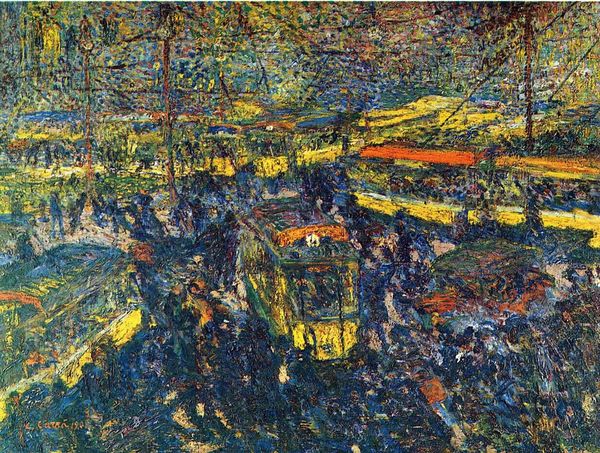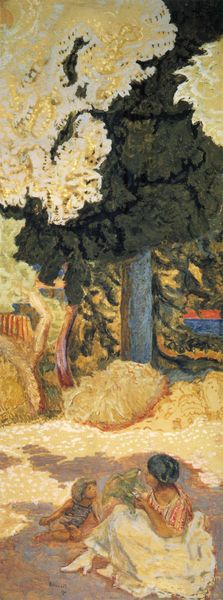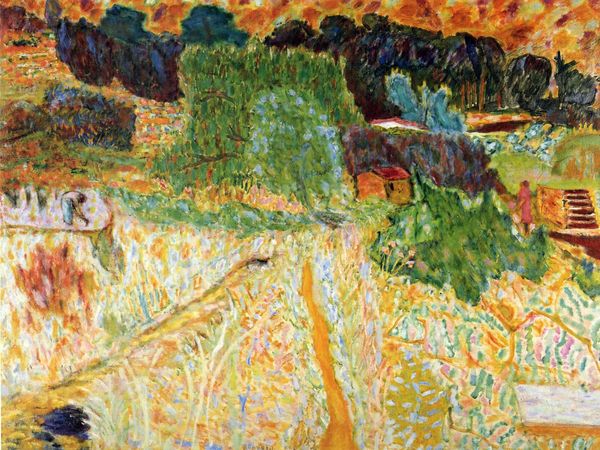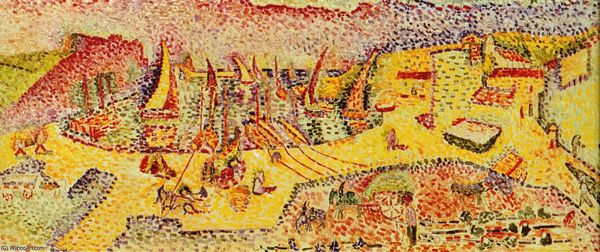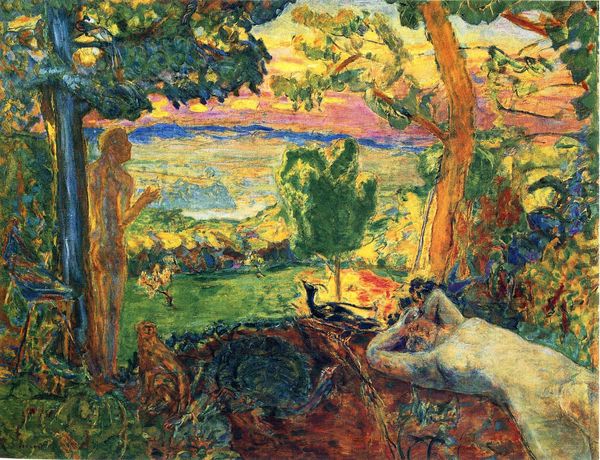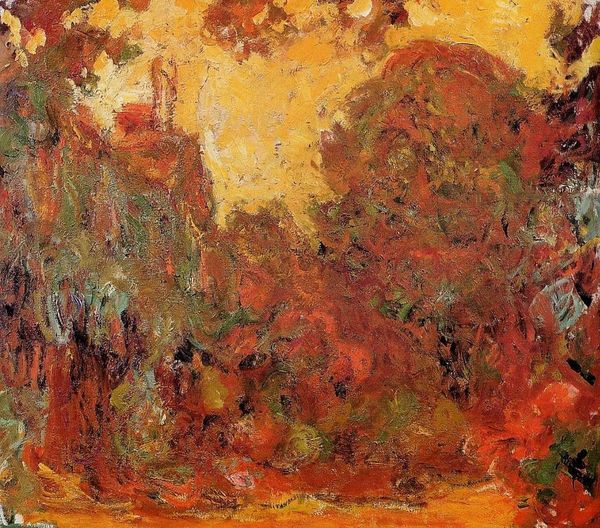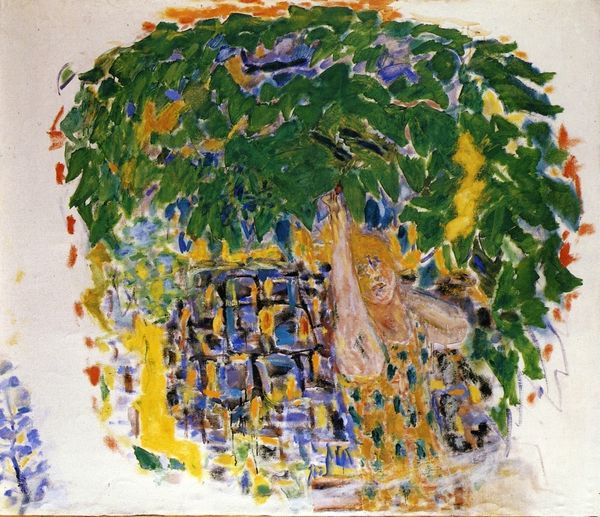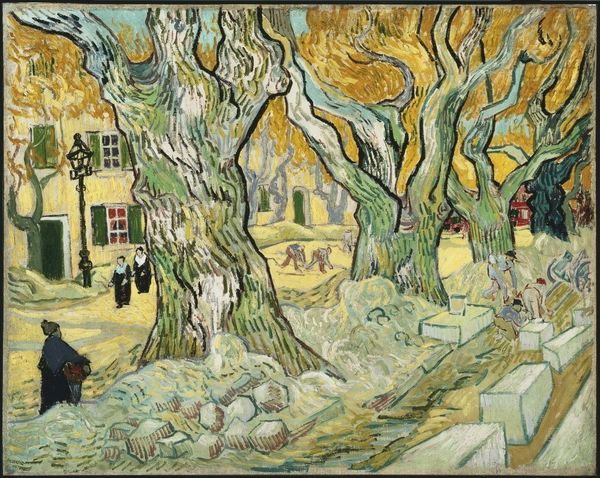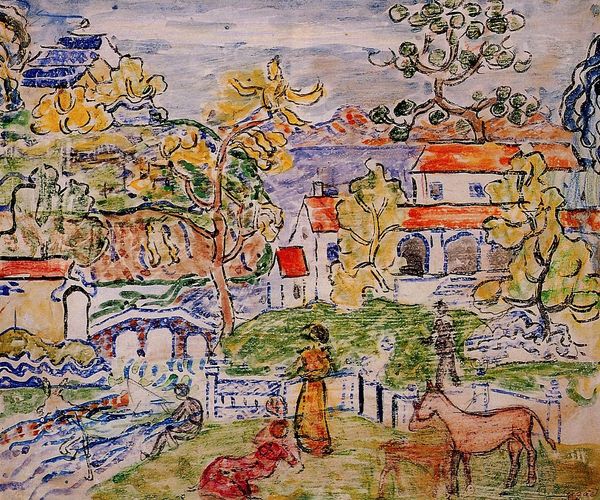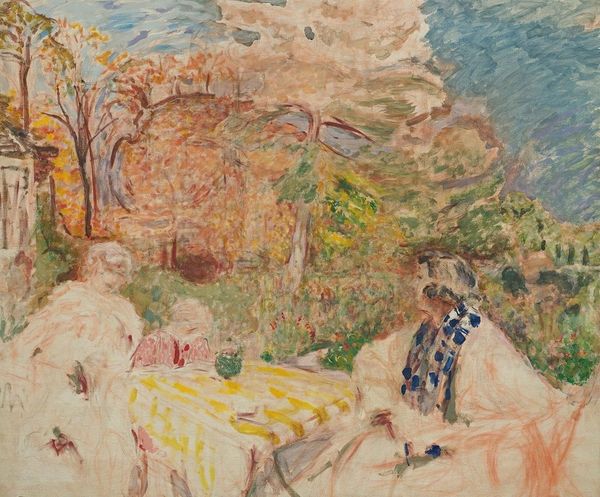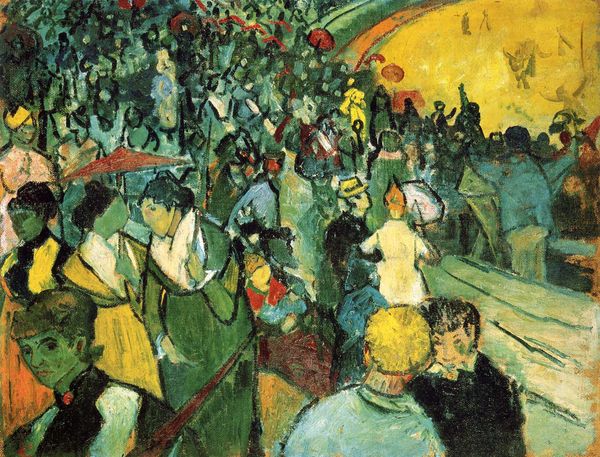
Copyright: Public domain
Editor: Here we have Pierre Bonnard's "In Summer," created in 1931. It looks like an oil painting. My first impression is that it feels like a happy memory—a brightly colored snapshot of a summer day. How do you interpret this work, looking at its formal qualities? Curator: Initially, observe how Bonnard orchestrates colour. Note the almost iridescent shimmer achieved through the juxtaposition of complementary hues—oranges and blues—evoking the palpable heat of summer. Consider also the dissolution of form into pure sensation. Do you see how traditional perspective is eschewed, creating a flattening of the picture plane? Editor: Yes, it's like the background is just as important as the figures. I was also thinking, with all the blended brushstrokes, it's not quite abstract but definitely moving in that direction. Is there something more than just painting what you see? Curator: Precisely. While seemingly representational, Bonnard prioritizes the intrinsic elements of painting. Ask yourself: what role does light play here? Notice how it doesn’t merely illuminate but actively constructs the space, blurring boundaries between objects and imbuing the scene with a dreamlike quality. His process privileges perceptual experience over objective reality. Editor: So, it's not just about capturing a scene, but about how light and colour can shape our feelings? Curator: Precisely. Through rigorous manipulation of the medium—the interplay of pigments, the textured brushwork—Bonnard arrives at a sophisticated commentary on the very nature of seeing, on how we construct meaning from visual stimuli. It makes one think how his aesthetic project embraces and even anticipates aspects of modernist abstraction while remaining grounded in the tangible world. Editor: I see it now. It’s the emotion behind the colors, not the clear picture, that really speaks. Thank you. Curator: My pleasure. It's always rewarding to explore the subtle, structural intricacies of art, discovering how much depth can exist beyond the surface depiction.
Comments
No comments
Be the first to comment and join the conversation on the ultimate creative platform.
